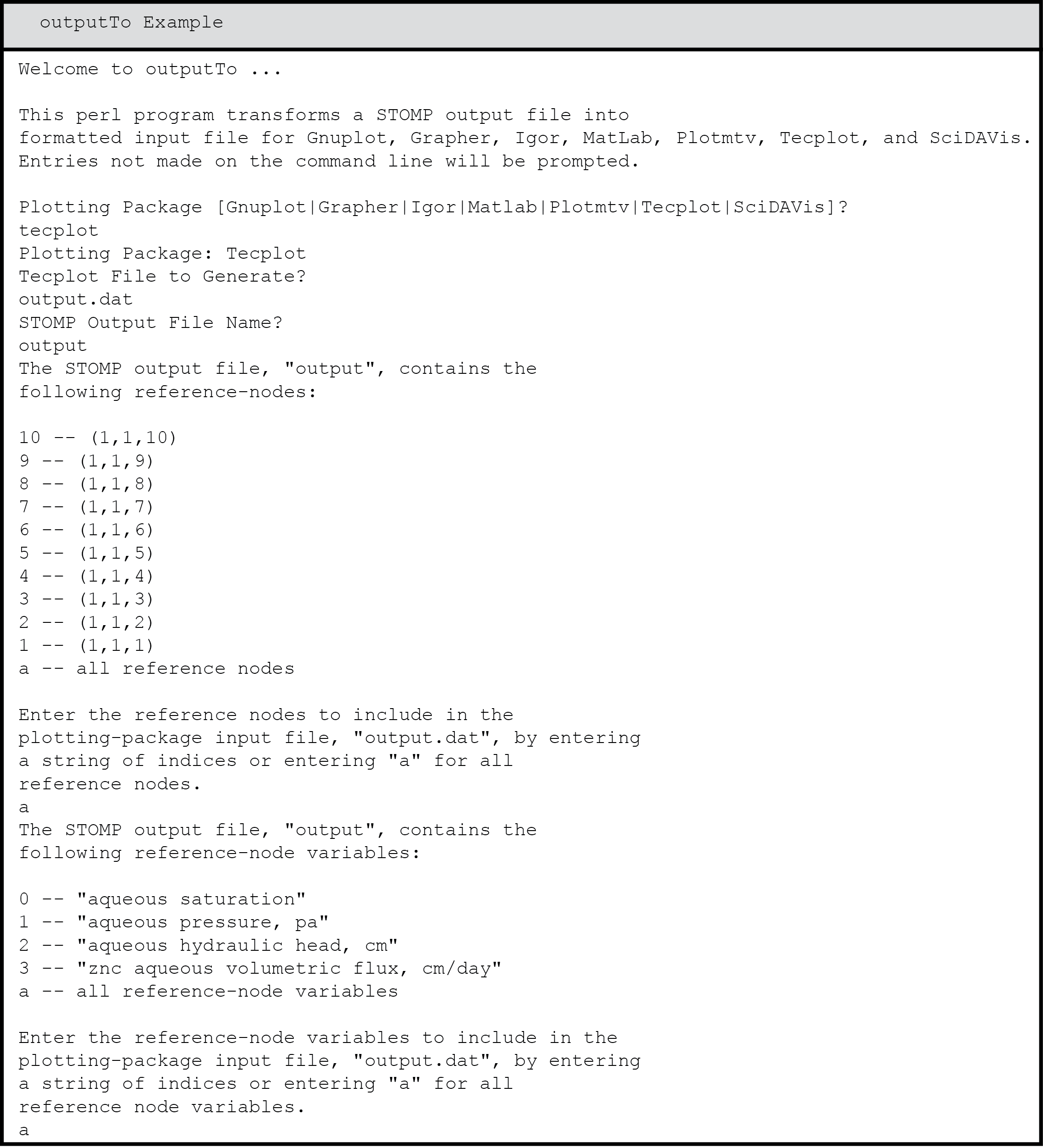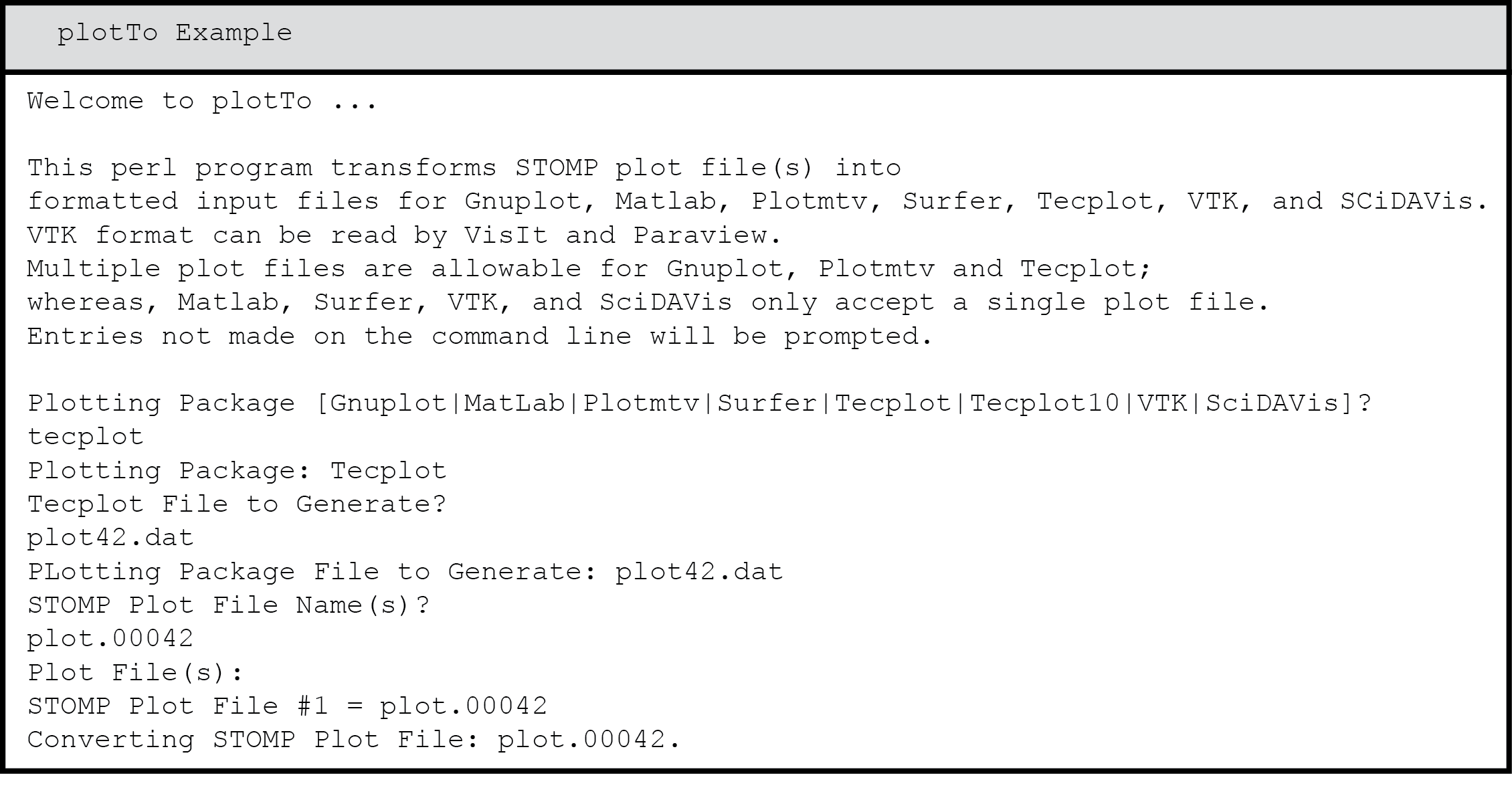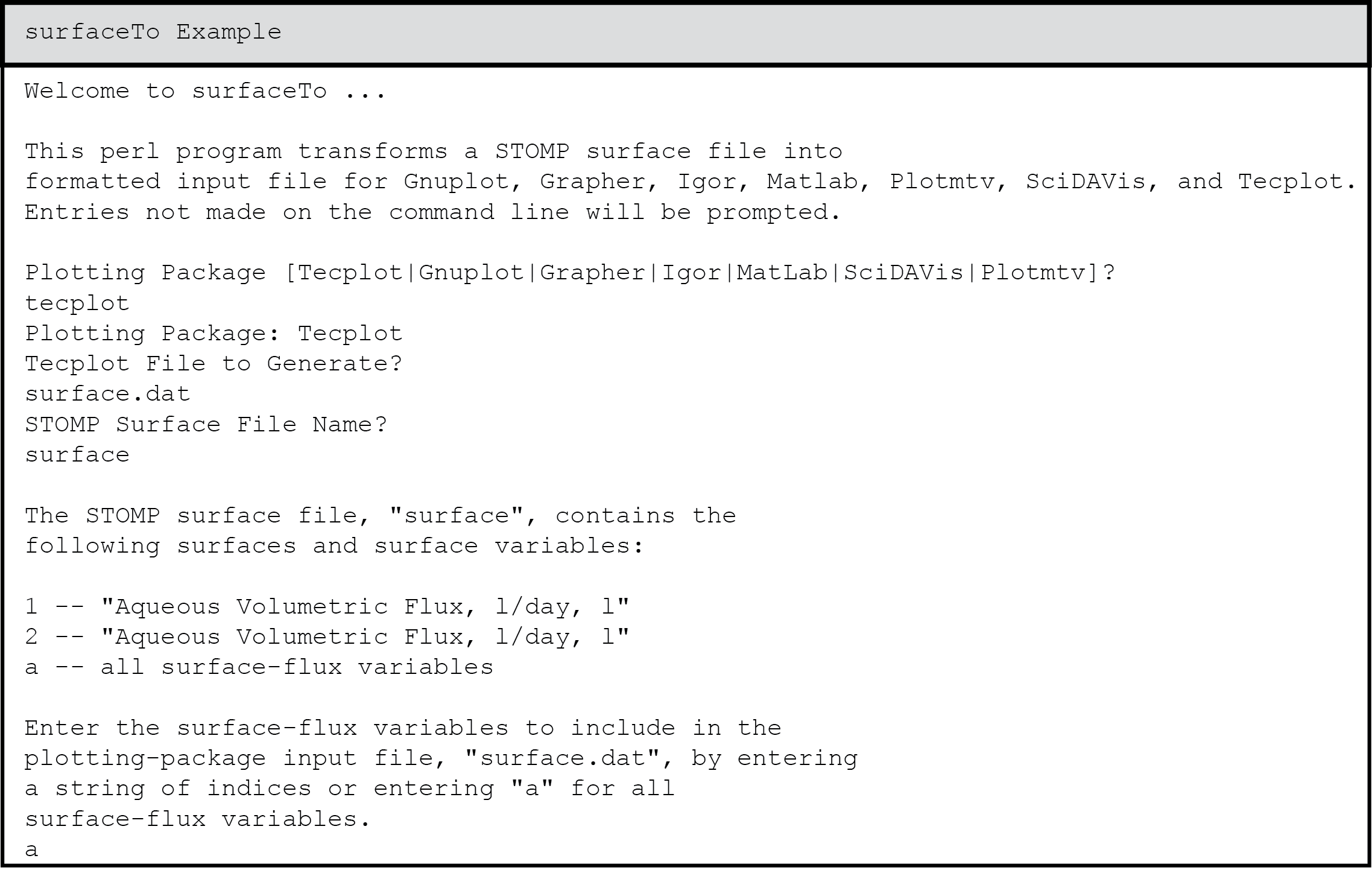
STOMP User Guide
Subsurface Transport Over Multiple Phases

STOMP User Guide
Subsurface Transport Over Multiple Phases
Post-processing
Several utilities have been developed to help users post-process files to reformat the STOMP data so that it can be read by a variety of plotting software. These utilities are scripts written in the Perl programming language and are distributed with the STOMP source code.
Post-processing of the output file can be done with the Perl script outputTo.pl. The user must have Perl installed on their machine. The outputTo.pl program transforms the output file into formatted input for usee with Gnuplot, Grapher, Igor, MatLab, Plotmtv, Tecplot, CSV, or SciDAVis.
The minimum command line is:
perl outputTo.pl
after which the user is prompted for the plotting package name, plotting package input file name, STOMP output file name, reference nodes, and reference node variables.
Example Screen Output

However, the command line can be expanded to include these options. A few examples of expanded command lines are:
| Commands | |
outputTo.pl -an -t Gnuplot output.dat output |
prints all nodes (variables and title will be prompted) to file output.dat |
outputTo.pl -av -an Tecplot ref_nodes.dat output |
prints all nodes and variables to file ref_nodes.dat |
outputTo.pl Grapher ref_nodes.dat output |
prints (variables and nodes will be prompted) to file ref_nodes.dat |
outputTo.pl -av -t Tecplot tecplot.dat output |
prints all variables (nodes and title will be prompted) to file tecplot.dat |
Post-processing of the plot files can be done with the Perl script plotTo.pl. The user must have Perl installed on their machine. The plotTo.pl program transforms the plot.n files into formatted input for Gnuplot, MatLab, Plotmtv, Surfer, Tecplot, TecplotXY, Tecplot10*, VTK (for use with ParaView), CSV, or OpenIAM.
The minimum command line is:
perl plotTo.pl
after which the user is prompted for the plotting package name, plotting package input file name, STOMP plot file name(s). Depending on which plotting package is selected, the user may also be prompted for plot variable names.
Example Screen Output

However, the command line can be expanded to include these options. A few examples of expanded command lines are:
| Commands | |
plotTo.pl Surfer plot.dat plot.123 |
prints to file plot.dat |
plotTo.pl -t -ts Tecplot plots.dat plot.123 plot.456 plot.789 |
prints to file plots.dat |
plotTo.pl -t Gnuplot plots.dat plot.[0-9][0-9] |
all available plot files ranging from plot.0 to plot.99 are printed to plots.dat |
plotTo.pl Tecplot plots.dat plot.* |
all plot files will be printed to plots.dat. |
plotTo.pl -t Tecplot plots.dat `ls -1rt plot.*` |
plot files in the listing made by `ls -1rt plot.*` are printed to plots.dat |
*There are some formatting differences between Tecplot 10 and Tecplot 360
Post-processing of the surface file can be done with the Perl script surfaceTo.pl. The user must have Perl installed on their machine. The surfaceTo.pl program transforms the surface file into formatted input for Tecplot, Gnuplot, Grapher, Igor, MatLab, SciDAVis, CSV, or Plotmtv.
The minimum command line is:
perl surfaceTo.pl
after which the user is prompted for the plotting package name, plotting package input file name, STOMP output file name, reference nodes, and reference node variables.
Example Screen Output

However, the command line can be expanded to include these options. A few examples of expanded command lines are:
| Commands | |
surfaceTo.pl -as -t Gnuplot surface.dat surface |
prints all surfaces (variables and title will be prompted) to file surface.dat |
surfaceTo.pl -av -as Tecplot surface.dat surface |
prints all surfaces and variables to file surface.dat |
surfaceTo.pl Grapher surface.dat surface |
prints (variables and surfaces will be prompted) to file surface.dat |
surfaceTo.pl -av Tecplot surface.dat surface |
prints all variables (surfaces will be prompted) to file surface.dat |